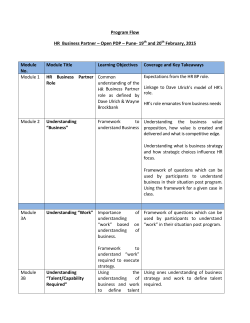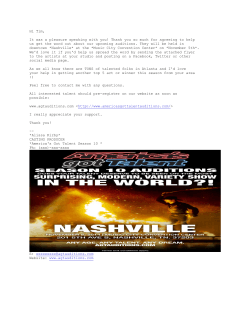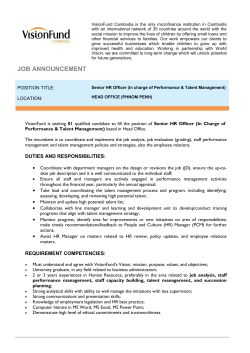
- Korn Ferry Briefings and Institute
Strategy Activation Planning a leadership development journey. About this series. In these four articles, we ask: what are the keys to developing agile leaders who can pivot with the needs of the business strategy? Part 1. Develop your leaders in context. Leadership development can be used to put the best minds in a company to work on real, current business problems. Becoming an effective leader, however, requires tremendous effort and time (Ericsson, Krampe, and Clemens 1993), perhaps stretching over the course of an entire career. Proven leadership talent is often scarce and additionally, leaders are facing more complex challenges earlier in their careers (Bersin 2012). Because of these issues, it is in every organization’s best interest to develop leaders at all levels. Each leader’s effectiveness depends on a number of factors, including personality traits, personal experience and workplace skills. Effective development addresses all of these. Most agree that leadership development should be aligned with business strategy and that it should ensure a robust pipeline of ready leaders. The importance of this alignment and readiness is highlighted by the ongoing quest for effective methodologies. We have found that viewing leadership development as a journey— one that integrates opportunities to gain insight, experiences, visibility and tackle challenges—creates paths that connect individual growth to organizational needs. Part 3. Realize that development is a journey. Meaningful change The role of human resource development. Part 2. Who leaders need to be and what they need to do. happens over time, but leaders can embrace new behaviors when they’ve been given time to understand them. Part 4. The power of service and purpose. Serving a greater good is a powerful motivator for a leader to be his or her best self. 1 Effective leaders are the “difference that makes a difference” for organizations. The quality of leadership is one of the most important predictors of an organization’s future success (Peterson, Walumbwa, Byron and Myrowitz 2009). Leadership development practitioners must find ways to balance an individual leader’s desire for growth and engagement with the organization’s need to drive business strategy and results. The most mature leadership development functions build capacity at the individual and organizational level by doing four things: G Improve skills and competence. Korn Ferry recognizes four leadership skill categories: thought, self, people, and results. Thought leadership is about anticipating and solving problems. People leadership skills are those needed to develop other employees. Self leadership skills revolve around selfmanagement. Results leadership skills are focused on the abilities of planning and execution. G G G Foster individual engagement. Whether individuals are in a managerial role now or not, they choose to lead—or not. The choice to lead comes from a deep sense of connection to the people and to the organization. Leaders are made when they understand their own unique values and purposes. With coaching and support, individuals can decide how leadership can allow them to act on their values. Create a path for succession. Leadership development must provide opportunities for leaders to stretch and grow into bigger jobs, and prevent the talent bottleneck for business growth. Development programs ensure there are enough leaders ready to step up and take on a broader range of responsibilities when needed. Support networking and organizational engagement. Leadership development can be used to create strong and lasting social bonds around a shared vision and purpose. This can help leaders talk about strategy and develop leadership qualities in others. Figure 1 Leadership development that serves individuals and organizations. Growth Individual Organization Engagement Improve skills and competence. Foster individual engagement. Help individual leaders gain the skills, knowledge and abilities they need. Foster commitment so that leaders choose to lead. Create a path for succession. Support networking and organizational engagement. Identify and develop leaders so that the organization has the right leaders when they’re needed. Improve the ability of leaders to activate the strategy. In order to serve all four of these aims through leadership development, programs must be integrated development journeys. These journeys go beyond training. Development and training have linked but different aims. Training has been likened to “filling up a glass;” in that it serves to add to a person’s knowledge base and information reserve. Development, on the other hand, not only fills up the glass but makes the glass larger and increases its capacity. The goal of strategic leadership development is to help individuals, groups and organizations improve their ability to work together productively (Day and Harrison 2011). Often this requires challenging methods of the past. Rabinowitz, et al. (2013) asks us to “picture a yearlong developmental journey, done in a cohort, where participants grapple with real business issues and learn about leadership as they address relevant and high-value problems in the context of their own organization.” Creating these learning journeys requires a new approach to the design process, which uses the current context of the organization as a starting point. 2 Designing effective leadership journeys. Figure 2 Strategic Leadership Journey Design Process. lish Estab the Core ft Shi B il d P r ou gra m De ma nd gn re si ectu t Ar D ch e i t en n m e e l m I m pelop v De t Fe ed Loob ack p Leadership development should activate its organization’s strategy. In fact, the fundamental question of strategic leadership development is this: in what areas does an organization need talent that is better or more plentiful than its competitors? (Boudreau et al. 2002.) For an example of strategy activation, take a recent case set in a health care delivery organization. The organization partnered with Korn Ferry to develop its leaders at a time of tremendous change. Recent mergers, massive growth in demand, and a new CEO with a new vision highlighted a real need for leadership within the organization. Together, we followed the Strategic Leadership Journey Design Process to create an integrated development strategy. 1.Recognize shift. In this step, the fundamental changes in the strategic roadmap were identified as “shifts” and these shifts highlighted the need for change. The shifts for the health care system were significant and pointed out challenging leadership gaps. Leaders of the future would need to be able to look beyond traditional settings for health care delivery and proactively partner with the communities they served. Administrative and clinical leaders would need to partner ever more closely to deliver on the organization’s mission. 2.Clarify demand. Once the shift and nature of change was identified, the next step was to clearly define the new competencies demanded of leaders. In this analysis the talent gaps became apparent. There was a need for more strategic agility, cultural competence, communication, innovation, teamwork and systems thinking. 3.Establish the core. For all that would change, it was important to identify that which would stay the same, including core leadership characteristics such as vitality, authenticity, learning agility, and self-awareness. In the case of this health care organization, the core characteristics also included ethics and cultural competence. 4. Craft design architecture. Crafting a design architecture meant addressing the learning objectives and a high-level map of accessible development experiences. One useful tool for any organization in creating a design architecture is the Korn Ferry Development Pipeline™. Best-practice learning journeys include all five components of the pipeline. 3 Insight: How do people gain an awareness of what is missing or needs improvement? Insights are typically gained through feedback and assessment (often in the form of 360° feedback). G G Motivation: Why should people be motivated to invest the time and effort it takes to develop as leaders? Executives set the stage for success through role modeling. They also provide resources, act as coaches and support improvement. Skills: How will people absorb new skills? Based on Korn Ferry’s research, the most valuable development experiences (in decreasing order) are: rotational or stretch assignments, action learning, mentoring, relationships, 360° assessments, exposure to more senior leaders and formal classroom training. G Real-world practice: How will people practice? Job experience and on-the-job challenges play a key role in developing leadership capabilities. Lessons learned early in one’s career have tremendous impact (McCall, Lombard, and Morrison 1988). G G Accountability: How will people be encouraged to internalize what they’ve learned and improve performance? They must receive feedback. They also need to be held accountable for how they apply what they’ve learned. 5.Build program. With the learning journey architecture in hand, the next step was to create or select the development experiences most aligned with the leader and the leader’s context. In this case, participants at all levels were “players/coaches,” responsible for both patient and organizational outcomes. This meant that time for out of role development was short and had to be reserved for the highest impact experiences. As a result, virtual learning and action-learning projects, as well as workplace-based and just-in-time learning were combined with site visits and in-person, traditional, instructor-led development. All elements were tied together by the core leadership principles and aimed at critical competencies and experiences. 6.Implement development. To launch the experience, insight was gathered with assessments, feedback and coaching. The support of senior leaders instilled motivation in participants. New skills, introduced in development workshops and synchronous web meetings, and real-world practice were acquired through learning assignments. Accountability was built through peer feedback and manager involvement. 7.Feedback loop. Strategic leadership development journeys like the one described here impact the leader and the organization. At the health care system, the impact of the leadership development journey was assessed using multiple methods. These included: G Post-session evaluations to gauge participant response and suggestions. G Reviews of development planning (participants document their action plans). G Conducting a formal 360° post-program Time2Change® survey. G Comparing engagement surveys. G Measuring actual retention rates for pivotal positions. G Performance ratings of managers by employees. The program management team reviewed evaluation data quarterly. This made it possible to see further opportunities for program alignment to the business strategy and needs of leaders. 4 Conclusion This paper proposes a framework for the design of strategic leadership development journeys. We invite our fellow leadership development practitioners to evaluate their performance against it. Are you fostering leader growth at the individual and organizational levels? Who are your visible role models at the senior level? Are your learning strategies aligned with your business strategies? Do your learning strategies take advantage of the “tincture of time,” or are they transactional events? Leadership is a valuable asset that every organization needs. However, it is a borrowed asset that the organization cannot own. It must be continuously acquired, developed, nurtured, engaged, and rewarded. The benefit of approaching leadership development as an ongoing journey is the progressive arrival of mature, committed leaders who are prepared to activate the business strategy. References Bersin. 2012. Talentwatch. New York: Bersin and Associates. Boudreau, John W., Peter M. Ramstad, and Peter J. Dowling. 2002. Global talentship toward a decision science connecting talent to global strategic success. Ithaca, N.Y.: Center for Advanced Human Resource Studies, Cornell University. Day, David and Michelle. Harrison. 2006. “Leadership Development.” The Encyclopedia of Career Development. New York: Sage Publications. DeRue, S. 2011. “Adaptive leadership theory: Leading and following as a complex adaptive process.” Research in Organizational Behavior, 125-150. Ericsson, K. Anders, Ralf Th Krampe, and Clemens Tesch-Römer. 1993. “The Role of Deliberate Practice in the Acquisition of Expert Performance.” Psychological Review. 100 (3): 363-406. Peterson, Suzanne, Fred Walumbwa, Kristin Byron, and Jason Myrowitz. 2009. “CEO Positive Psychological Traits, Transformational Leadership, and Firm Performance in High-Technology Start-up and Established Firms.” Journal of Management. 35 (2): 348-368. Rabinowitz, Noah, C. McCarthy, Kathy Woods, J. Feldman, J. Gillespie, and Jonathan Feil, J. 2013. Talent Management Best Practice Series: Leadership Development. Evelyn Orr (Ed.) Los Angeles: The Korn Ferry Institute. 5 Contributors Claudia Hill Global Lead for High-Potential Leadership Development, Korn Ferry Leadership and Talent Consulting +1 612 373 3493 cori.hill@kornferry.com Allen Moore Senior Partner and Executive Coaching Solution Lead, Korn Ferry Leadership and Talent Consulting +1 650 787 3032 allen.moore@kornferry.com About Korn Ferry At Korn Ferry, we design, build, attract and ignite talent. Since our inception, clients have trusted us to help recruit world-class leadership. Today, we are a single source for leadership and talent consulting services to empower businesses and leaders to reach their goals. Our solutions range from executive recruitment and leadership development programs, to enterprise learning, succession planning and recruitment process outsourcing (RPO). About The Korn Ferry Institute The Korn Ferry Institute, our research and analytics arm, was established to share intelligence and expert points of view on talent and leadership. Through studies, books and a quarterly magazine, Briefings, we aim to increase understanding of how strategic talent decisions contribute to competitive advantage, growth and success. Visit www.kornferry.com for more information on Korn Ferry, and www.kornferryinstitute.com for articles, research and insights. 6 © Korn Ferry 2014. All right reserved.
© Copyright 2025











